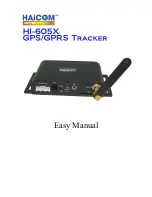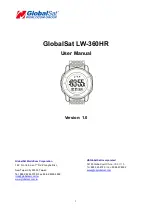
35
Position Format
To change the position format, highlight the “Po-
sition Format” label on the Units of Measure menu,
(shown on the bottom of the previous page) then
press the right arrow key. A screen similar to the
one at right appears.
The Eagle Explorer can show the position in de-
grees, minutes, and thousandths of a minute (36
28.700') or degrees, minutes, seconds, and tenths
of a second (36 28' 40.9". It can also show posi-
tion in UTM’s or Universal Transverse Mercator
projection.
UTM’s are marked on USGS topographic charts. This system divides the
Earth into 60 zones, each approximately 6 degrees wide in longitude.
Their unit of measure is in meters. For example, 15 N means that the
position shown to the right of the “N” is in grid 15, and it’s north of the
equator.
Press the up or down arrow keys to highlight the desired position format.
Press the EXIT key to both select the format and erase the position
format menu.
NMEA / DGPS
The Eagle Explorer transmits data through the data port in the back of
the unit using NMEA 0183 format, version 1.5 or 2.0. This data is used by
other electronic devices such as marine autopilots for position and steer-
ing information.
DGPS on the other hand, is a data input. DGPS is an acronym for Differ-
ential Global Positioning System. Currently, it relies on a system of ground-
based transmitters that send correction signals to small DGPS receivers.
DGPS gives you a more accurate position than is otherwise possible.
All wiring connections to the Eagle Explorer are made to it’s power cable.
See the sample wiring diagrams on the next page for general wiring pro-
cedures. Read your other product’s owner’s manual for more wiring infor-
mation.
Once the cables are wired, turn the Explorer on, press the menu key, and
select NMEA / DGPS from the System Setup menu. A screen similar to
the one at the top of the next page appears.
















































